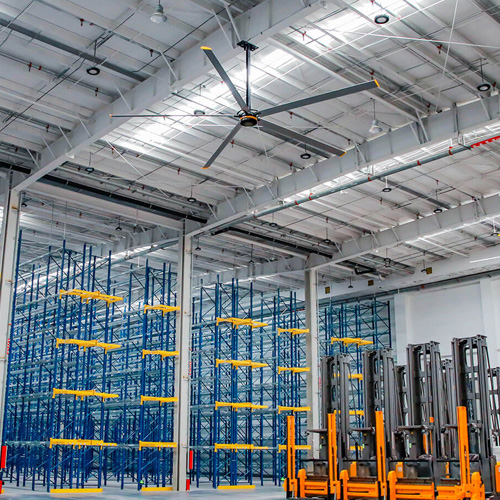
What you store can have a big impact your bottom line, especially when it comes to energy costs. While there are always the costs associated with providing the appropriate and safe temperature controlled environment for your personnel, there are also the energy costs that come with keeping inventory at the proper temperature.
To help save money or at least better manage those costs, there are things you can do in terms of resources, equipment and practice. While one item on this list may not seem like it would have a large impact, the combined benefits of using these tips over time will make a marked difference in managing energy costs and finding ways to improve performance.
Lighting. One of the most cost effective and simple changes you can make to save energy costs is in how you light your warehouse. Industrial LED lighting may have an upfront installation cost, but the reduction in how often bulbs need to be changed recoups those monies quickly. It saves not only in supplies, but also in the manpower and resources it takes to change them. You may need particular lighting, depending on your inventory, but look for those options that are energy efficient, and talk with your accountant on possible tax benefits.
Open and Shut. Another very simple thing you can do is something your mother taught you at an early age – open and shut doors behind you and your staff. Leaving doors open that allow cool or heated air to escape puts a straining on your healing and cooling systems, causing them to run more often or for longer periods of time. Train your employees to shut doors behind them, to not brace doors open for ventilation, or consider utilizing motion sensors or timed doors to regulate the amount of time doors are open.
Refrigeration. This is perhaps the truest in food storage situations, and applies in distribution, medium to long term storage and even day to day restaurant use. Numerous studies have shown that up to 60% of an organization’s energy costs can be attributed to utility costs, especially in refrigerated food applications. Running refrigerators is expensive and unavoidable. To help combat costs, there are a couple of simple things you can do. Organize its contents in such a way that keep the cold air from flowing out so quickly. Keep often grabbed items in a “grab and go” area. Install wire shelving to keep air moving instead of blocked by full shelves. All of these things reduce the strain on a refrigerator’s motor, making it run less and draw less power, improving your energy efficiency.
Air Circulation. One of the challenges of the large warehouse space is to get the cool air to all parts of the building. Every warehouse has those “hotspots” where air flow does not seem to exist, creating a sweltering pocket of inactivity. Using HVLS fans, cooler air is distributed and exchanged along indirect routes from HVAC duct work, weaving it in smaller spaces and farther reach points to provide comfort and control in each part of the facility.
READ: Cost Savings Generated by MacroAir Industrial Fans
In the ongoing battle to reduce temperature related costs, addressing air movement first is a good idea. Installing MacroAir industrial fans is more cost effective than adding duct work and using more energy to cool remote areas of the warehouse.
Warehouse managers are always looking for ways to save money or do things better. Reducing energy costs does not have to be time consuming or require a large expenditure of capital. Simple, individual improvements can make a big difference, as will buying the right equipment, tools and other resources for your activity.


.png)

